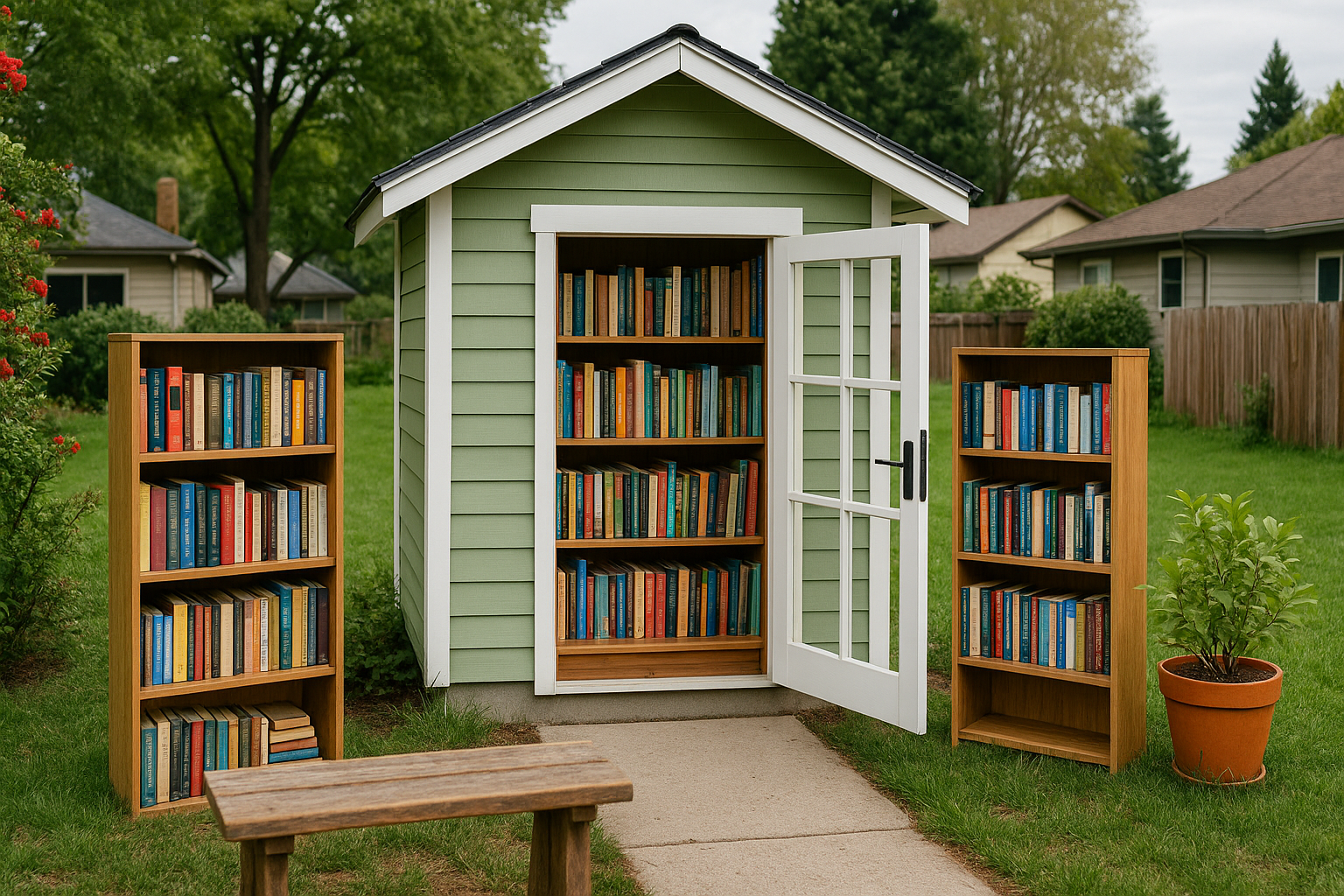
Estimated reading time: 7 minutes
Tiny Home Library: Transforming Your Tiny Home or ADU into a Community Library & Book Exchange Hub
Key Takeaways
- Innovative Use of Small Spaces: Transform a tiny home or ADU into a welcoming library that boosts literacy.
- Enhanced Community Engagement: Foster neighbourly ties with a “take a book, leave a book” exchange and vibrant reading zones.
- Inclusive and Accessible Design: Ensure step-free entry, natural lighting, and built-in shelving for an inviting atmosphere.
- Diverse Book Collections: Curate books for all ages and backgrounds, supporting learning and cultural diversity.
- Ongoing Community Support: Regular maintenance and outreach ensure the library remains a lively community hub.
Table of contents
Imagine a cozy space nestled in your neighbourhood—a tiny home transformed into a community library where every book is a doorway to new adventures. This innovative concept not only boosts literacy but also creates a vibrant hub for neighbours to connect.
What Is a Tiny Home Library?
A tiny home library is a small, repurposed structure, be it a tiny home or an ADU, designed specifically to house books for public enjoyment. Unlike traditional libraries, these creative spaces emphasize:
- Flexibility: They adapt to various neighbourhood settings—from busy cities to peaceful rural areas.
- Charm and Accessibility: With cosy interiors and weatherproof construction, these libraries are inviting all year‑round.
- Community Learning Hub: A welcoming space where residents can read, learn, and exchange ideas.
Find detailed insights on innovative tiny home ideas at Homecrux and creative design inspirations at Homes & Gardens.
Benefits of a Tiny Home Library for the Community
This small footprint creates big impacts in multiple ways:
- Boosts Literacy: By providing free access to books for children, teenagers, adults, and seniors, it helps improve reading skills and educational opportunities.
- Strengthens Community Ties: These libraries become local meeting spots that encourage spontaneous conversations and neighbourly interactions.
- Facilitates Book Exchange: The “take a book, leave a book” system fosters a culture of sharing and mutual respect.
Learn more about how these innovative libraries are benefiting communities at Homes & Gardens and ADU Friendly Neighbourhoods Canada.
Step-by-Step Guide to Building and Managing a Tiny Home Library
Planning and Design
Every successful tiny home library starts with thoughtful planning. Consider these essential steps:
- Choosing the Right Structure: Opt for a weatherproof tiny home or ADU with plenty of natural light. Ensure barrier-free access through ramps or wide doorways.
- Interior Layout: Incorporate built-in shelves, inviting seating areas, and designated reading nooks. Think of using creative décor like murals or plants to brighten the space.
- Accessibility Features: Ensure clear signage, step-free entry, and clutter-free walkways for a fully inclusive experience.
For more tips on design and accessibility, visit Homecrux and check out additional ideas on Accessible Design for Tiny Homes.
Stocking the Library
A library’s charm lies in its collection. Consider these ideas for a diverse and engaging inventory:
- Sourcing Books: Utilize local donations, partner with schools and bookstores, and connect with literacy organizations.
- Diverse Selections: Offer board books, novels, large-print materials, and books in multiple languages to cater to everyone in the community.
- Regular Rotation: Keep the collection fresh by rotating books and incorporating visitor suggestions.
Discover more about building robust collections at Tiny Home Living Canada Guide.
Organizing the Book Exchange System
An effective book exchange system is vital for maintaining the library’s spirit. Here’s how:
- Clear Guidelines: Use friendly signage to explain the “take a book, leave a book” system, ensuring transparency and respect among users.
- Simple Borrowing Rules: Encourage timely returns to ensure everyone gets a chance to enjoy the collection.
- Informative Displays: Incorporate guide cards or chalkboard updates to keep users informed of new arrivals and ongoing events.
More insights can be found at Community Led Tiny Home Development and Homes & Gardens.
Maintenance Tips
Regular upkeep is key to a thriving library. Consider these maintenance ideas:
- Regular Cleaning: Sanitize high-touch areas, dust shelves, and inspect for damage frequently.
- Inventory Management: Use an inventory checklist to keep track of the book collection and remove any damaged or outdated titles.
- Community Involvement: Engage local volunteers to assist with cleaning, repairs, and reorganization.
For a detailed checklist, visit ADU Maintenance Checklist Canada.
Success Stories and Inspirational Examples
Across Canada, tiny home libraries are making a significant impact. For example, the “Nysos” Tiny House Project in British Columbia offers:
- Custom Design: Wall-to-wall shelving, abundant natural lighting, and a cozy reading nook.
- Community Engagement: A space where readers of all ages gather to explore, share, and connect.
- Proven Impact: Enhanced literacy rates and strengthened neighbourly bonds across the community.
Read more about these inspiring projects at Homecrux and Homes & Gardens.
Encouraging Community Involvement and Outreach
A vibrant tiny home library thrives on active community participation. Consider these outreach ideas:
- Promotion: Distribute flyers, use local social media groups, and harness word of mouth to spread the initiative.
- Events: Host story hours, book clubs, and themed reading challenges to keep the community engaged.
- Partnerships: Collaborate with local schools, senior centers, and literacy organizations to expand reach and support.
Additional strategies can be found at Community Led Tiny Home Development.
Conclusion: Fueling Literacy and Community Through a Tiny Home Library
Transforming a tiny home or ADU into a community library offers a simple, effective way to boost literacy and build vibrant neighbourhoods. With smart design, a diverse book collection, a friendly exchange system, and continual maintenance, these libraries have been proven to foster lifelong learning and neighbourly bonds.
Ready to make a difference? Take the first step toward creating a space where books bring people together—a place that celebrates learning, generosity, and community spirit, one book at a time.
Frequently Asked Questions
Q1: What is the primary purpose of a tiny home library?
A: Its main goal is to provide easy and free access to books while fostering community engagement and literacy.
Q2: Do I need special permits to convert a tiny home or ADU into a library?
A: Requirements vary by region, so it’s best to consult local planning authorities before beginning your project.
Q3: Can anyone donate books to the library?
A: Absolutely. The “take a book, leave a book” system encourages donations from all community members, ensuring a diverse collection.
Q4: How often should I update the book collection?
A: Rotating the collection every few months keeps the library fresh and engaging for repeat visitors.

Leave a Reply